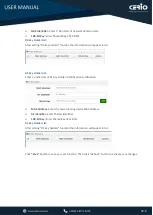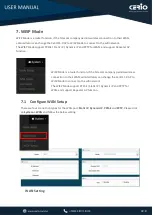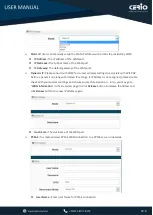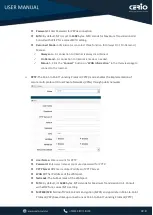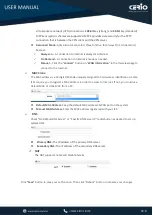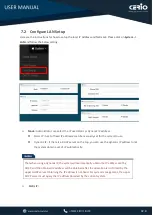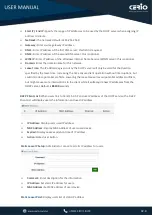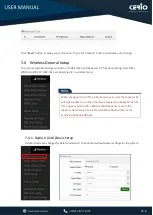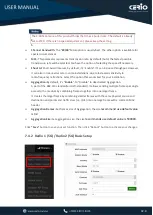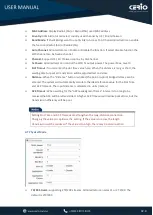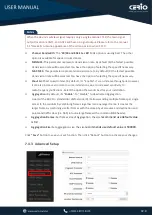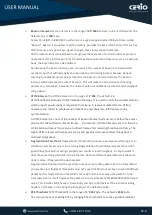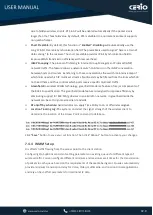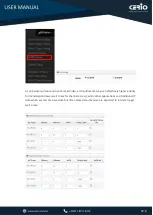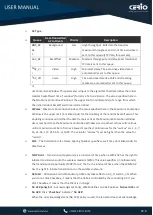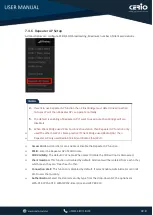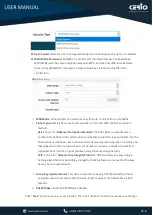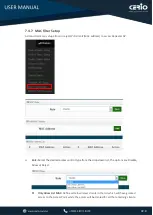
V2.0
Beacon Interval:
Beacon Interval is in the range of
40
~
3500
and set in unit of
millisecond
. The
default value is
100
msec.
Access Point (AP) in IEEE 802.11 will send out a special approximated 50-byte frame, called
“Beacon”. Beacon is broadcast to all the stations, provides the basic information of AP such as
SSID, channel, encryption keys, signal strength, time stamp, support data rate.
All the radio stations received beacon recognizes the existence of such AP, and may proceed
next actions if the information from AP matches the requirement. Beacon is sent on a periodic
basis, the time interval can be adjusted.
By increasing the beacon interval, you can reduce the number of beacons and associated
overhead, but that will likely delay the association and roaming process because stations
scanning for available access points may miss the beacons. You can decrease the beacon
interval, which increases the rate of beacons. This will make the association and roaming
process very responsive; however, the network will incur additional overhead and throughput
will go down.
DTIM Interval:
The DTIM interval is in the range of
1
~
255
. The default is
1
.
DTIM is defined as
Delivery Traffic Indication Message
. It is used to notify the wireless stations,
which support power saving mode, when to wake up to receive multicast frame. DTIM is
necessary and critical in wireless environment as a mechanism to fulfill power-saving
synchronization.
A DTIM interval is a count of the number of beacon frames that must occur before the access
point sends the buffered multicast frames. For instance, if DTIM Interval is set to 3, then the
Wi-Fi clients will expect to receive a multicast frame after receiving three Beacon frame. The
higher DTIM interval will help power saving and possibly decrease wireless throughput in
multicast applications.
Fragmentation Threshold:
Fragmentation Threshold is one more parameter which is given in
all stations and Access points. Fine tuning Fragmentation Threshold parameter can result in
good throughput but not using it properly can results in low throughput. In simple words it
does the same thing which MTU do in Ethernet. Both are different parameters but the work
done is same, it fragments the data packets.
Fragmentation threshold will be used when we have more data packet size to be transmitted
and we have less fragment threshold value. Let’s say from Ethernet we have to send 1400 byte
packet but the fragmentation threshold is set as 400. In this case when the packet is to be
transmitted on air it will fragment the packet in to 4 small packet 400+400+400+200 and send
on air. This includes MAC frame body and CRC so 400 byte will be in total including
headers. This helps in increasing the throughput. The default is 2346.
RTS Threshold:
TRTS Threshold is in the range of
1~2347
byte. The default is
2347
byte.
The main purpose of enabling RTS by changing RTS threshold is to reduce possible collisions
Summary of Contents for SEFA OW-500 A1
Page 75: ...V2 0 ...
Page 146: ...V2 0 ...

